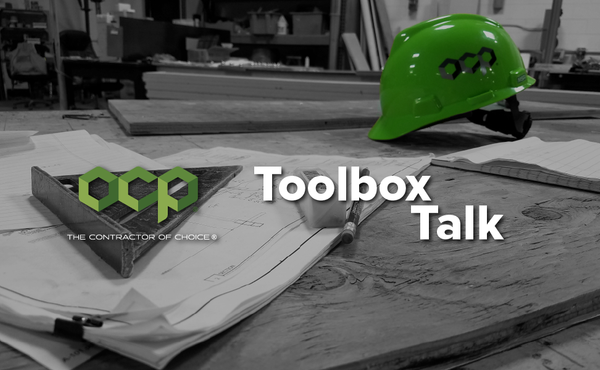Written by Matt Taylor, CHST, SMS
I have visited all three cities within the past month and have begun to see issues with guardrails and fall protection plans throughout the state. The issues encountered include maintenance of guardrail systems, planned use of retractable lifelines/swing fall and fall protection plans involving warning lines.
Fall protection violations remain in the top two citations issued by OSHA and remains the number one issue when related to workplace fatalities in construction. OCP has always taken the issue very seriously and it remains the only issue in which an employee is sent home on their first offense and terminated from employment on their second offense.
OCP Contractors Hierarchy of Control for Fall Protection:
Guard Rails Where Possible
Must support 200lbs of force on stanchion and top-rail in an outward and downward direction
Top rail positioned between 39 and 42 inches in height
Stanchions must not be more than 8 feet apart when working with wood rails
Mid-rail must support 150lbs in an outward direction and between 18 and 24 inches in height
Wire rope guardrails may not have more than 3 inches of deflection
When guardrails are not controlled by OCP and are not in compliance we must either:
Refuse to work on the same level of the issue until controlling entity fixes the rails or fix the guard rails ourselves. Remember, OSHA views this as there is no safe distance from an exposed edge.
Fall Restraint
Fall arrest systems utilized to prohibit the worker from coming within two feet of the edge
Warning Lines
Set back 15 feet from the edge of the roof. We cannot use the roofers 6-foot warning line system as ours. Warning lines need to be utilized when we need to access large areas and do not need to be next to a leading edge. When we are working around other trades on the same level, signs should be posted on the warning line “Personal Fall Arrest Systems Required Beyond This Point” and positioned no more than 25 feet apart.
Personal Fall Arrest Systems Last
Anchor points shall hold 5000 lbs of force
Leg straps to be tight
Chest straps need to be tight across the chest and not below
Never work beyond a 45-degree angle from an anchor point and anchor points should be set back at least 10 feet from exposed edges to prevent a swing fall
All Fall Protection Systems
All workers must be trained in the use of each system and their limitations prior to assigning employees a task to use them
All systems must be inspected prior to use and/or daily
No system may be used if found to be defective
Call a safety director or myself if you need help setting up a fall protection plan, have issues with other parties maintaining guardrail systems or if you have questions on fall protection systems or plans. There is never an excuse to be exposed to a fall and not be protected. We all have the obligation to stop work when hazards are found and needing correction. As Managers of OCP we need to thank those who follow protocol and continue to have safety as our #1 priority.

